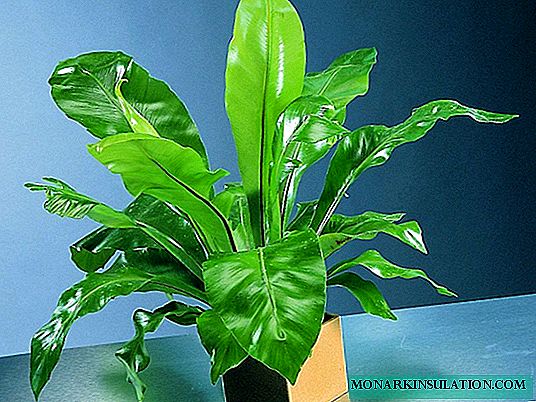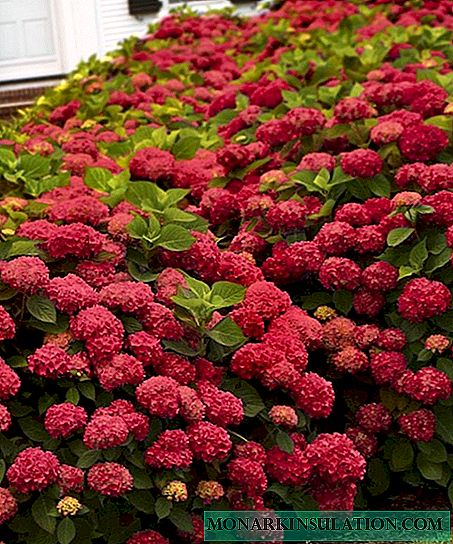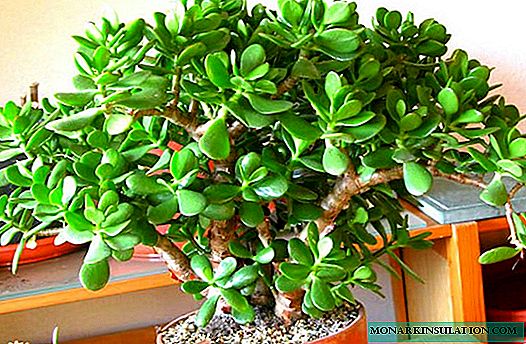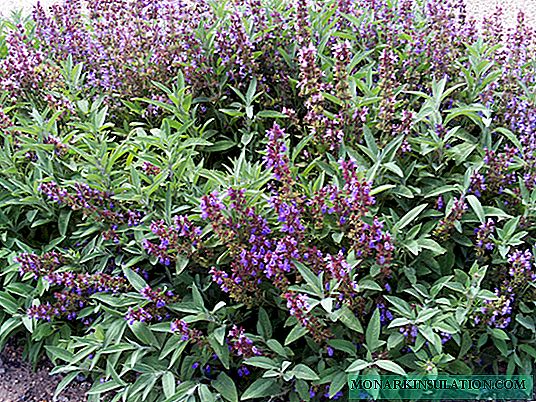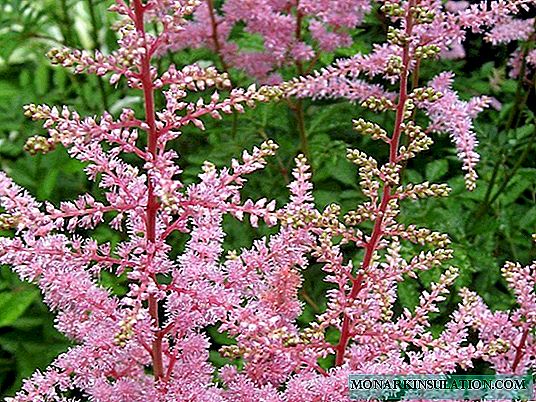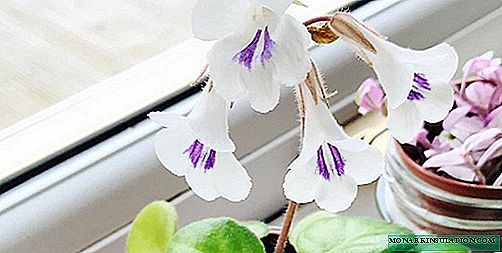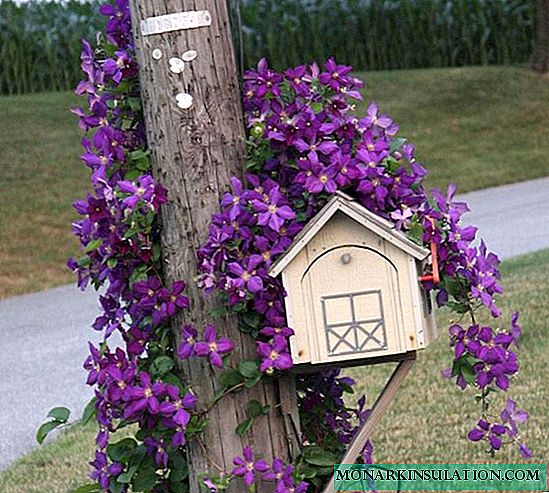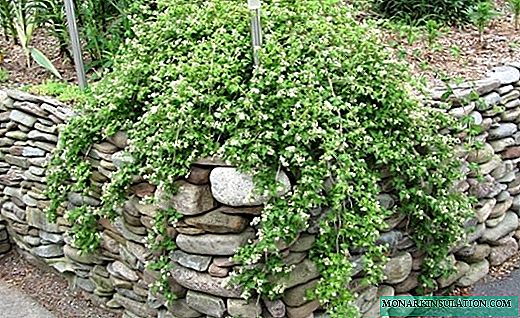Stefanandra is a perennial deciduous shrub. Translated from Greek, the name means "male wreath", which is correlated with the ring arrangement and stamens on the flowers. But not flowers, but decorative curly shoots deserve to become a real highlight of the garden.

Botanical characteristics of the plant
The plant belongs to the family Rosaceae. Its homeland is East Asia, especially Korea and Japan. Wide, sprawling shrubs in height and width reach 2.5 m. But only an adult plant has such dimensions, its annual growth is small. An elegant crown is formed from decorative shoots that take the form of an arc under their own weight, with carved foliage. Young branches are painted in reddish-brown shades. Leaflets on short cuttings are attached to them alternately. The shape of the leaf plate is oval or ovoid with a sharp end. The edges are smooth or with sparse denticles; there are varieties with strongly dissected foliage. The color of the greens is bright, light green, in the fall it turns yellow and orange.














In early summer, the bush blooms, this period lasts until August. Small (up to 5 mm) flowers are collected in sparse inflorescences. White pointed petals crown a spherical yellow core. The aroma of the plant is unexpressed, pleasant. In September-October, small leaflets ripen. Ripened fruits begin to unfold from below and small spherical seeds spill out of them. In one ovary, a pair of seeds is formed.
Varieties of Stefanander
In culture, there are only two types of stefanander:
- incised leaf;
- Tanaki.
Incised leaf stefanander usually grows to 1.5-2 m, but in width is 2-2.5 m. The bush grows very slowly, it can approach the indicated sizes only at the age of 25-30 years. The foliage is openwork, deeply dissected, which increases the decorative properties of the bush. Leaves on short petioles are located on two sides of the branch in the same plane, as if in a feather or fern. The bushes look very beautiful in autumn, their foliage has brown-red colors with a slight orange tint. From the end of May, small flowers with a delicate, pleasant aroma have been decorating Stefanander for a month. The petals have a greenish tint and inflorescences are not very beautiful, but give the bush some charm.

Botanists bred a separate, very beautiful variety of incised leaf stefanander - Crispa. It is small in size and belongs to the dwarf. The average height of the spreading bush is 50-60 cm, with a width of 2 m. In the garden of Crispus very much resembles a thick pillow or small pouf. Bent by an arc and strongly intertwined shoots form a continuous opaque crown. Very often, they touch the ground and take root, so new plants form. The leaves are very decorative, they are even more dissected and have a wavy or folded structure. The yellowed foliage is colored non-uniformly; red-brown, orange and yellow spots form on the plant. Flowers are completely identical to the original form.

Stefanandra Tanaki or Tanake. The adult bush is characterized by large sizes: width 2.5 m, height 2 m. Foliage of this species is much larger, individual leaflets on short (up to 1.5 cm) petioles reach a length of 10 cm. The edges of the leaf plate are double-sawed, the shape of the leaf is heart-shaped, pointed . Below the veins have a rare pubescence. In autumn, the plant is painted in purple, brown or burgundy tones. Inflorescences are also larger than the previous species and reach a diameter of 10 cm. The size of an individual bud is 5 mm. Flowering begins a month later and lasts from July to August. Creamy green flowers with a yellow core and filiform stamens cover the bush with a continuous veil. At the branches of the first year of life, the bark acquires a burgundy brown color, but in subsequent years becomes gray or light brown.

Breeding methods
Stefanander is propagated by seeds or petioles. Seeds are not stratified and immediately planted in open ground in mid-spring. Between crops maintain a distance of at least 1.5 m, otherwise the seedlings will have to thin out over time. You can also grow seedlings, but transplants are made no earlier than 6 months of age, so that the roots are sufficiently strengthened.
Before planting, they well loosen and fertilize the soil, it is important to immediately ensure good drainage with pebbles, gravel, broken bricks or coarse sand. Heavy clay soil before falling asleep pits are mixed with sand and peat. The top layer is mulched with a leafy substrate. Water the crops sparingly so that they do not sow.

Very well propagated bushes cuttings. Slices are made in the summer and, without any processing, they are dug into the ground. Petioles are rooted in almost 100% of cases.
Low spreading bushes without a garter can touch the lateral branches of the earth. Sometimes these branches form their own roots. In the future, it is enough to separate the shoot from the uterine plant and transplant.

Plant care
In the garden, the plant is planted in the open sun or in slightly shaded areas. Stefanander grows well on fertile soils, light sand-peat mixtures are desirable, but you can plant it in loamy or clay soils, providing drainage.
Water the bushes often, up to two buckets under the same root every 1-2 days. In rainy weather, watering is reduced. The plant signals a lack of moisture by drooping or drying leaves, so an attentive gardener will quickly understand how to help a pet. However, the earth must have time to dry between watering, otherwise the rhizome can rot.

For active growth and flowering, stefanander should be regularly fertilized with complex mineral fertilizers and organics (mullein, leaf compost and others).
In winter, the bushes do not need additional shelter, as they tolerate frosts well. Young plants with soft stems are bent to the ground and covered with snow, and in snowless winters with spruce branches. In the harsh climate in the spring you can find dry ends on the branches, they must be cut.
Pruning is done to rejuvenate the shrub and form a crown. Too dense thickets lose their decorative appearance. Shoots in the middle of the bushes from a lack of sunshine can discard foliage. Young growth from lateral shoots and near the root should be controlled, it is dug up.

How to effectively beat in the garden?
Stefanandra will not please with bright flowering, but its lush waterfalls of branches are suitable for decorating the slopes or banks of a small pond. Light greens go well with the dark foliage of trees or other shrubs. In autumn, the contrast of orange-red foliage with conifers and evergreens is wonderful.
It is best to use stefanander as a tapeworm or at central positions in the flower garden. In spring and summer, they form a delicate background for brightly flowering summers.

Low-growing crisps can effectively close the lawn, like ground cover varieties. The high waves of the perennial will become a wonderful hedge, especially if there is a busy highway nearby and it is necessary to absorb noise with emissions. All varieties are suitable for urban or park gardening; they look beautiful in mixborders in the foreground.

